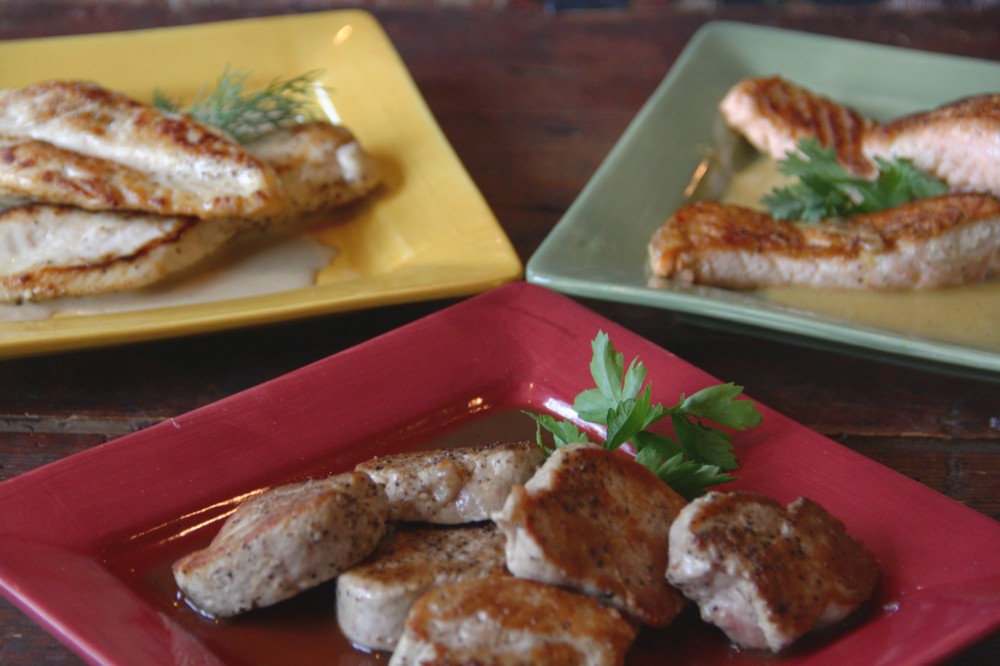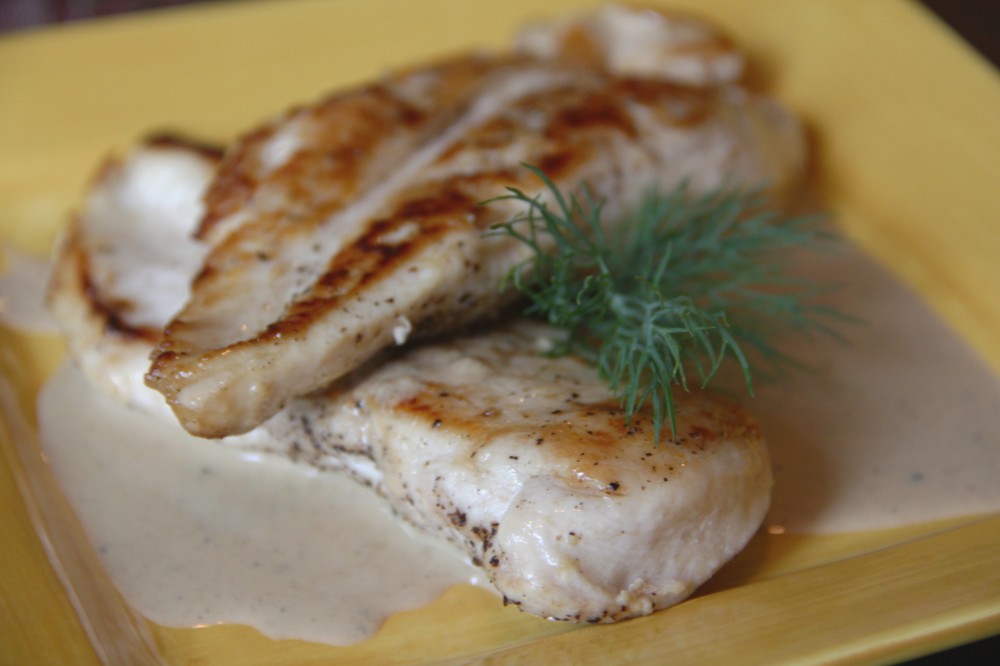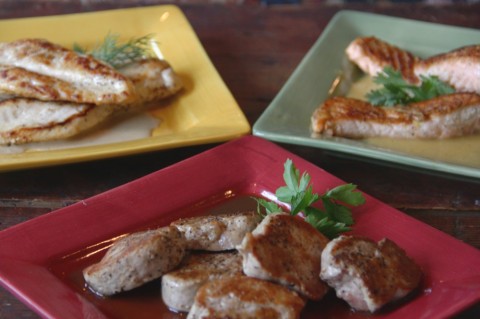
As you all know we Three Many Cooks love our recipes but each of us also believes it’s equally important to internalize a few basic cooking techniques. Those nights when you don’t have the time or energy to try a new recipe? Techniques allow you to open the fridge and create a meal with what you’ve got. They also inspire confidence, which comes in handy at 6 PM when the recipe you’re making calls for fresh dill and all you’ve got is tarragon.
Since Cook without a Book: Meatless Meals just came out I’ve been thinking about some of my favorite techniques and formulas from the original How to Cook Without a Book
that published in 2000. Sear and sauce tops the list. To watch me demonstrate this technique—one video’s worth a thousand words—check out the video below. For a step-by-step explanation, read on:
How to Sear & Sauce
You can sear just about any thin cut or even thick cuts cooked to medium/medium-rare. These cuts include:
- Boneless, skinless chicken breasts split to create 2 thin cutlets
- Turkey cutlets
- Pork tenderloin, cut crosswise into 3/4-inch or so medallions
- Boneless pork chops
- Fish steaks (e.g. tuna, swordfish, mahi-mahi)
- Salmon fillets
- Sea scallops
- Beef steaks
- Lamb chops, rib or loin
Regardless of the cut, the technique is the same. Start by turning your skillet on low. It takes a lot less time to bring a warm skillet to a hot state, and if you wait until you’re ready to cook to heat the skillet, you’ll likely drop the cut before the skillet’s ready.
If you lightly drizzle the cut with oil rather than adding it to the pan, you’ll use less (and the skillet won’t smoke). After oiling the cut, lightly season it with a little salt and pepper and toss to coat.
A couple of minutes from cooking turn your gas burner to high. (Electric stove owners may want to try a strong medium-high.) Once the pan’s good and hot—I like to see wisps of smoke start to rise from my seasoned non-stick skillet—add the cut. If you don’t get a solid sizzle, yank it out.
At this point keep your eye on the stove but walk away. Depending on the cut’s thickness and density it should be done in 2 to 3 1/2 minutes per side, which is an eternity when you’re hovering. To avoid the temptation to turn the cut more than once, set a timer and busy yourself with something else—set the table, make a salad, cook the vegetable. The only way to get it that delectable dark crust is to leave it alone.
Not only is browning crucial for the cut’s flavor, it’s also important for the pan sauce as well. All those brown drippings left in the skillet contribute to the sauce’s flavor.
Now it’s time to make the pan sauce. It’s such a quick simple step and it takes the eating experience from ordinary to extraordinary. Add about 1/2 cup—straight orange juice or 6 tablespoons of chicken broth and 2 tablespoons of an acidic ingredient like lemon juice or vinegar for example—and reduce the sauce by about half. At this point you’ll need to enrich and thicken the sauce by adding a couple of teaspoons of butter or a tablespoon or so of cream. If the sauce isn’t too acidic—lemon juice or vinegar based—you can also thicken the sauce with a pinch of cornstarch dissolved in water. You may want a little of both.

I offer Seared Chicken Cutlets With Tarragon-Mustard Cream Sauce as a recipe that exemplifies the sear and sauce technique, but you can also see this technique in action in Seared Pork Tenderloin with Apple-Ginger Pan Sauce. Once you learn how to sear and sauce, you’ll find yourself heading to the fridge and saying, “I know just what to serve for dinner tonight.”
- 1 large chicken breast (about 8 to 10 ounces), tenderloin removed, breast halved crosswise to make 2 cutlets
- 2 teaspoons oil (olive, canola, vegetable)
- Salt and ground black pepper
- ½ cup chicken broth
- 1 tablespoon Dijon mustard
- ¼ teaspoon dried tarragon
- 1 tablespoon heavy cream
- ¼ teaspoon cornstarch dissolved in 1 teaspoon water
- Heat a heavy-bottomed medium (10-inch) non-stick skillet over low heat. Coat chicken and tenderloins evenly with oil, sprinkle lightly with salt and pepper, and toss to coat. Mix broth, mustard, and tarragon in a Pyrex measuring cup; set aside.
- A couple of minutes from cooking turn on vent fan and increase heat under pan to high (or strong medium-high for electric stove owners). When pan is hot (a seasoned non-stick skillet will start to send up wisps of smoke) add chicken; cook without turning until well browned on one side, about 3 minutes. Turn chicken and continue to cook until well browned and cooked through, 2 to 3 minutes. Transfer to a clean plate.
- Add broth mixture to skillet; simmer, adding any accumulated chicken juices, until reduced by half, a couple of minutes. Whisk in cream and then cornstarch mixture; continue to cook until sauce is thick enough to coat the chicken, almost instantly. If sauce is too thick, simply add water to thin to proper consistency. Pour sauce over chicken and serve.

Love your “How to cook…” book – made your basic stir fry last night. So good.
Oh my goodness, here I am again. I made your white wine vinegar pan sauce last night and was reminded of the simplicity/yumminess of this method. Really need to practice with your many variations. I came back to find a good link to share with friends on Facebook.
I can’t wait to try out this technique! The chicken with tarragon-mustard cream sauce looks wonderful!